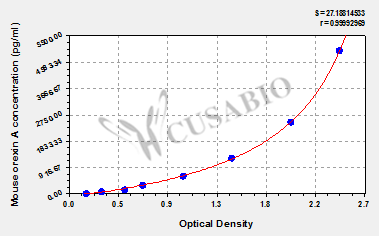The Mouse Orexin A ELISA Kit is a powerful tool for quantitative analysis of Orexin A protein levels in mouse serum, plasma, tissue homogenates, and cell lysates. Orexin A, also known as hypocretin-1, is a neuropeptide hormone that plays a crucial role in regulating sleep-wake cycles, appetite, and energy metabolism.
The Mouse Orexin A ELISA Kit has a wide detection range of 78 pg/mL-5000 pg/mL and a high sensitivity of 19.5 pg/mL, ensuring precise and accurate measurements even at low concentrations. The kit uses a sandwich assay principle, which involves the use of two monoclonal antibodies specific to the Orexin A protein.
The assay time for the kit is 1-5 hours, and the sample volume required is 50-100ul. Detection is done at a wavelength of 450 nm, making it easy to read and interpret the results. The kit is suitable for use in metabolism research.






